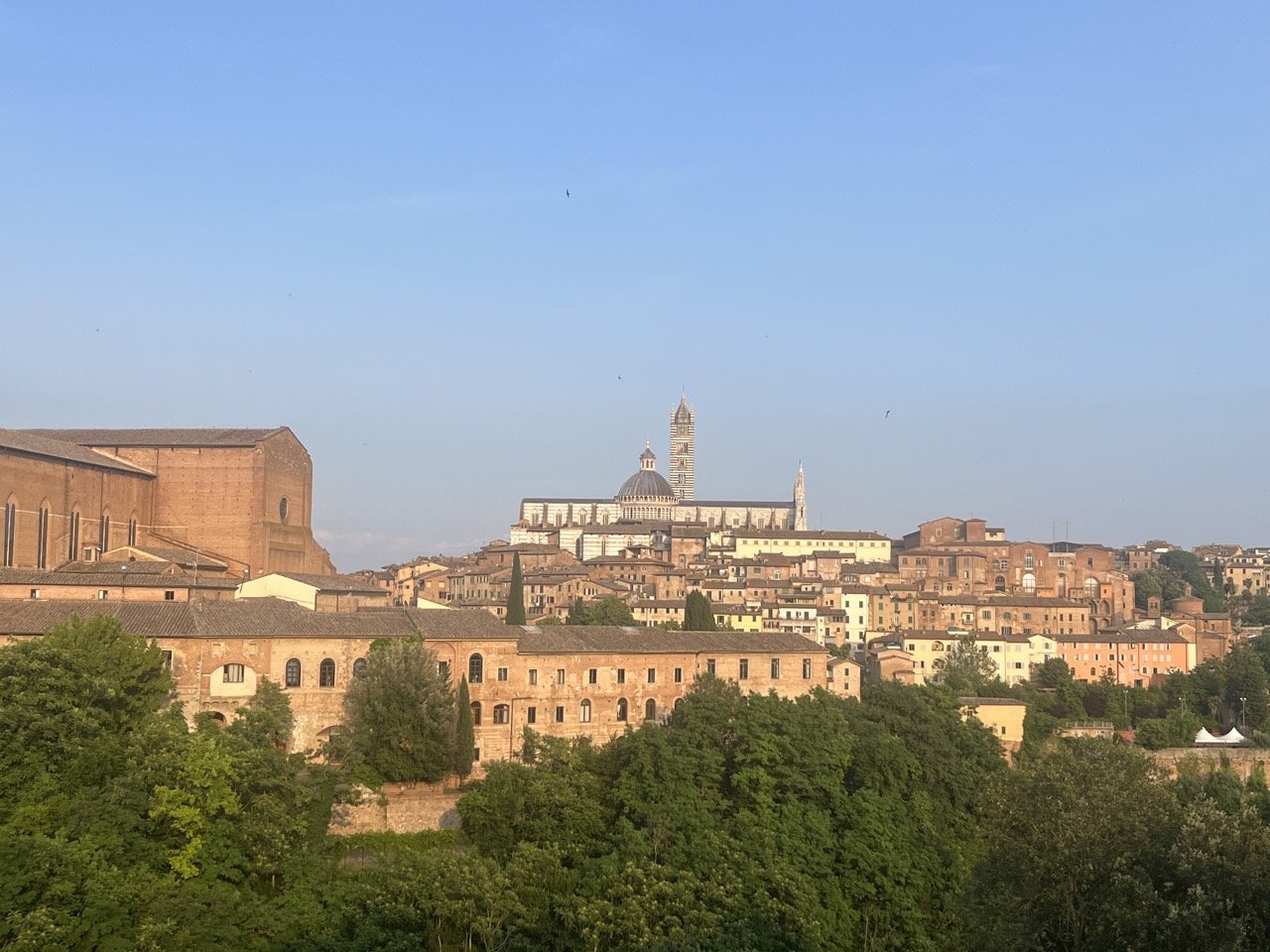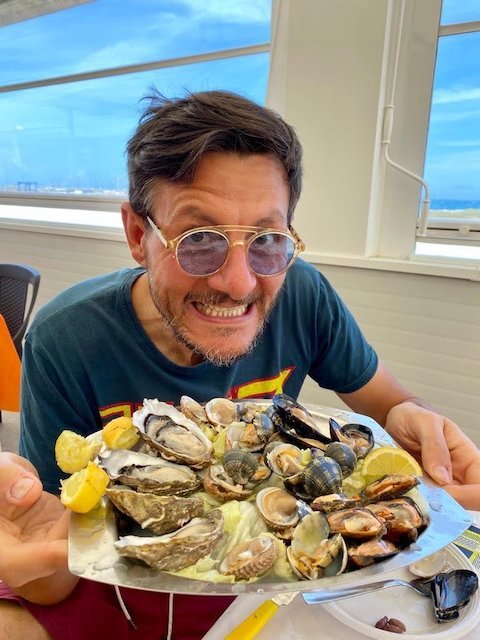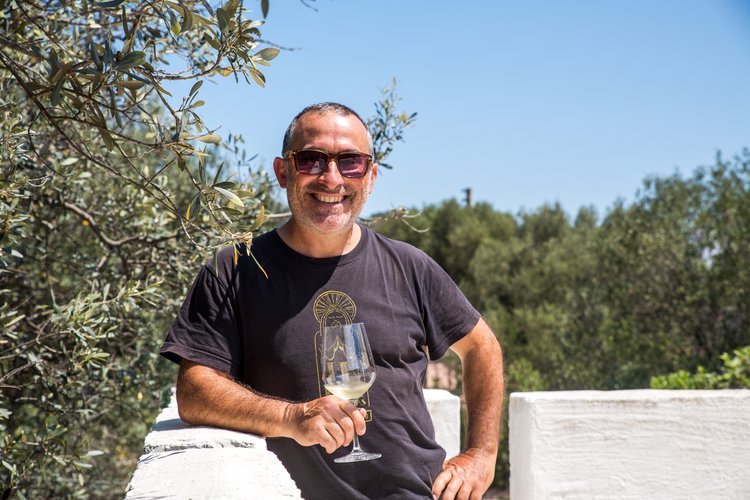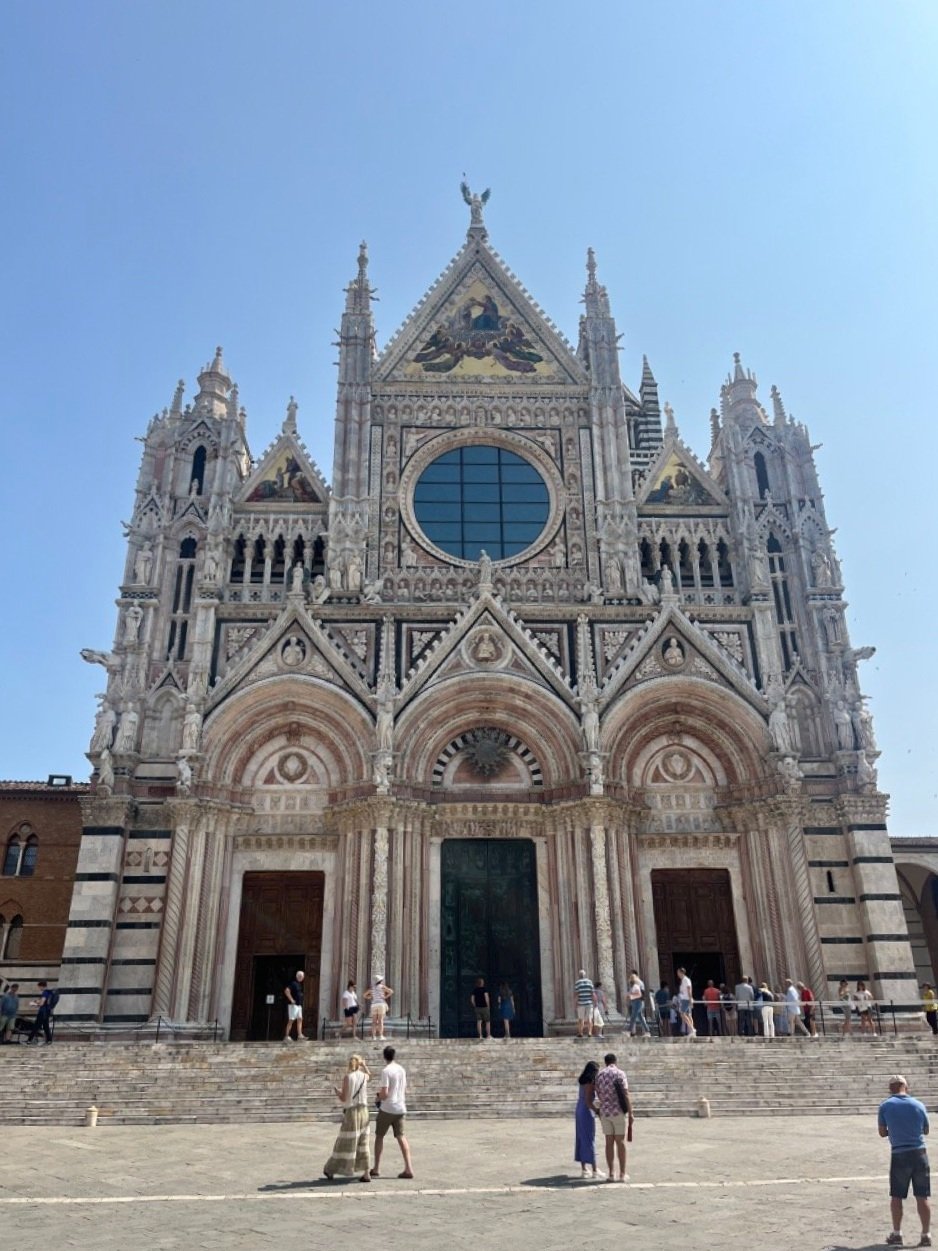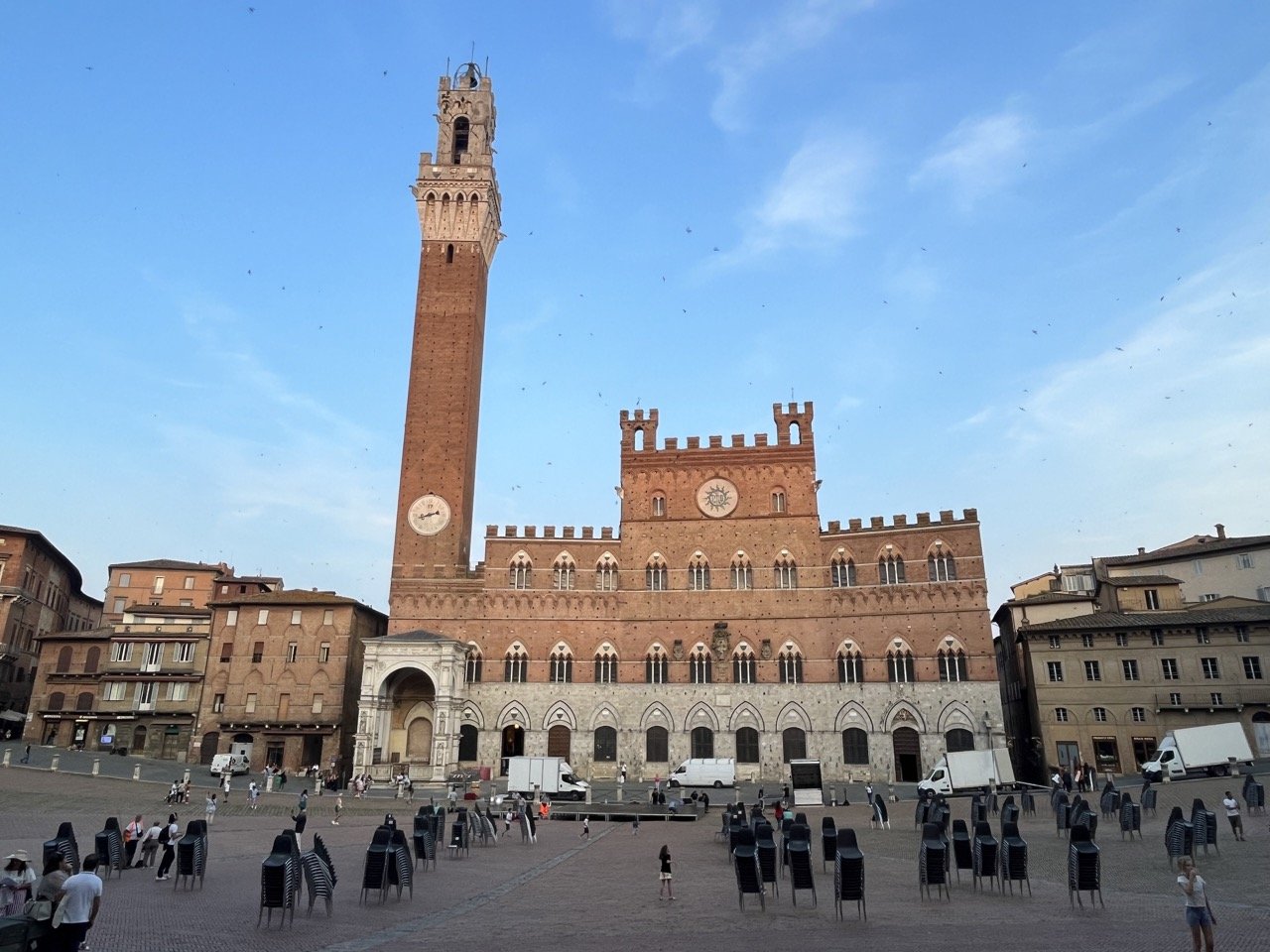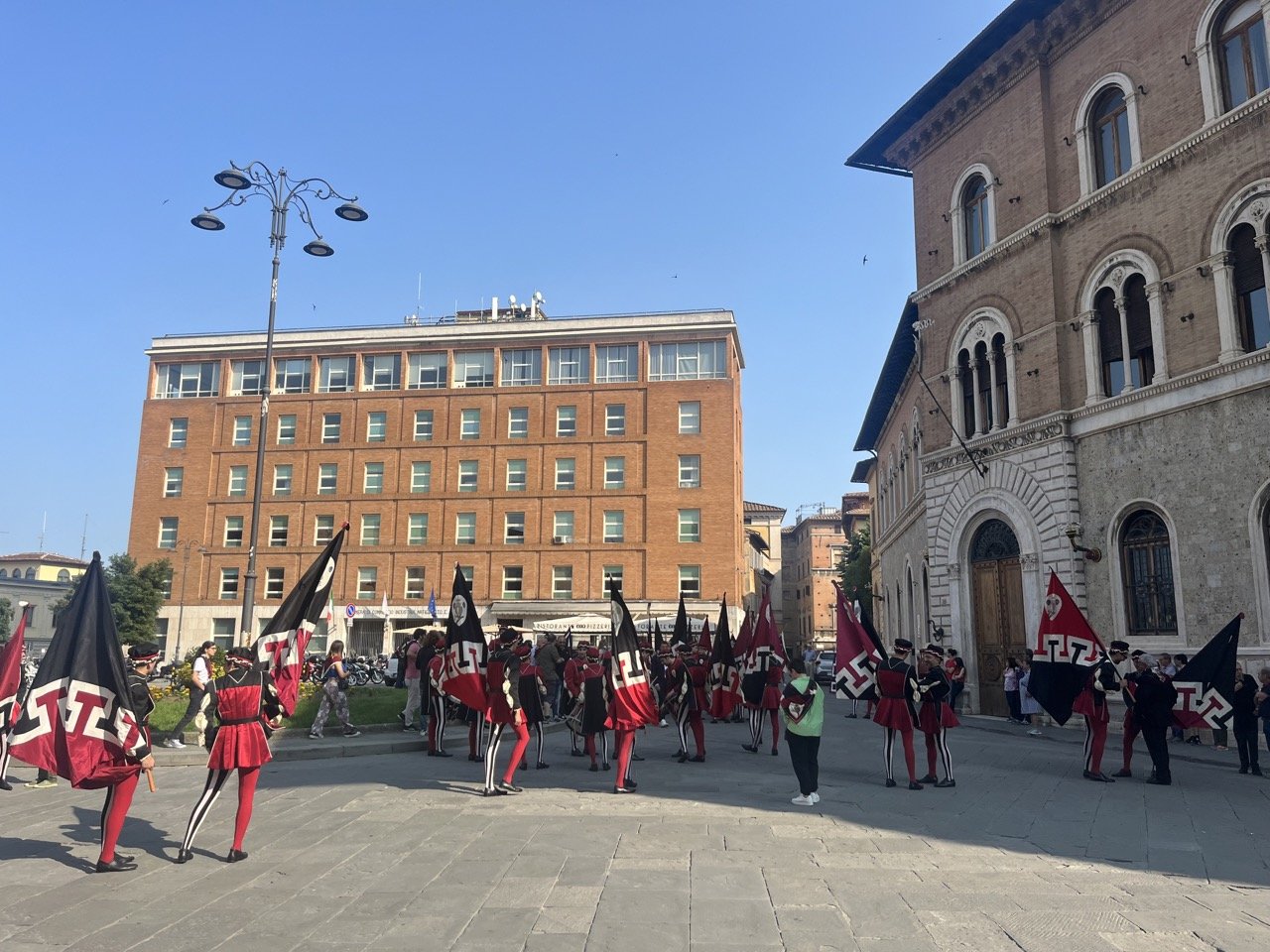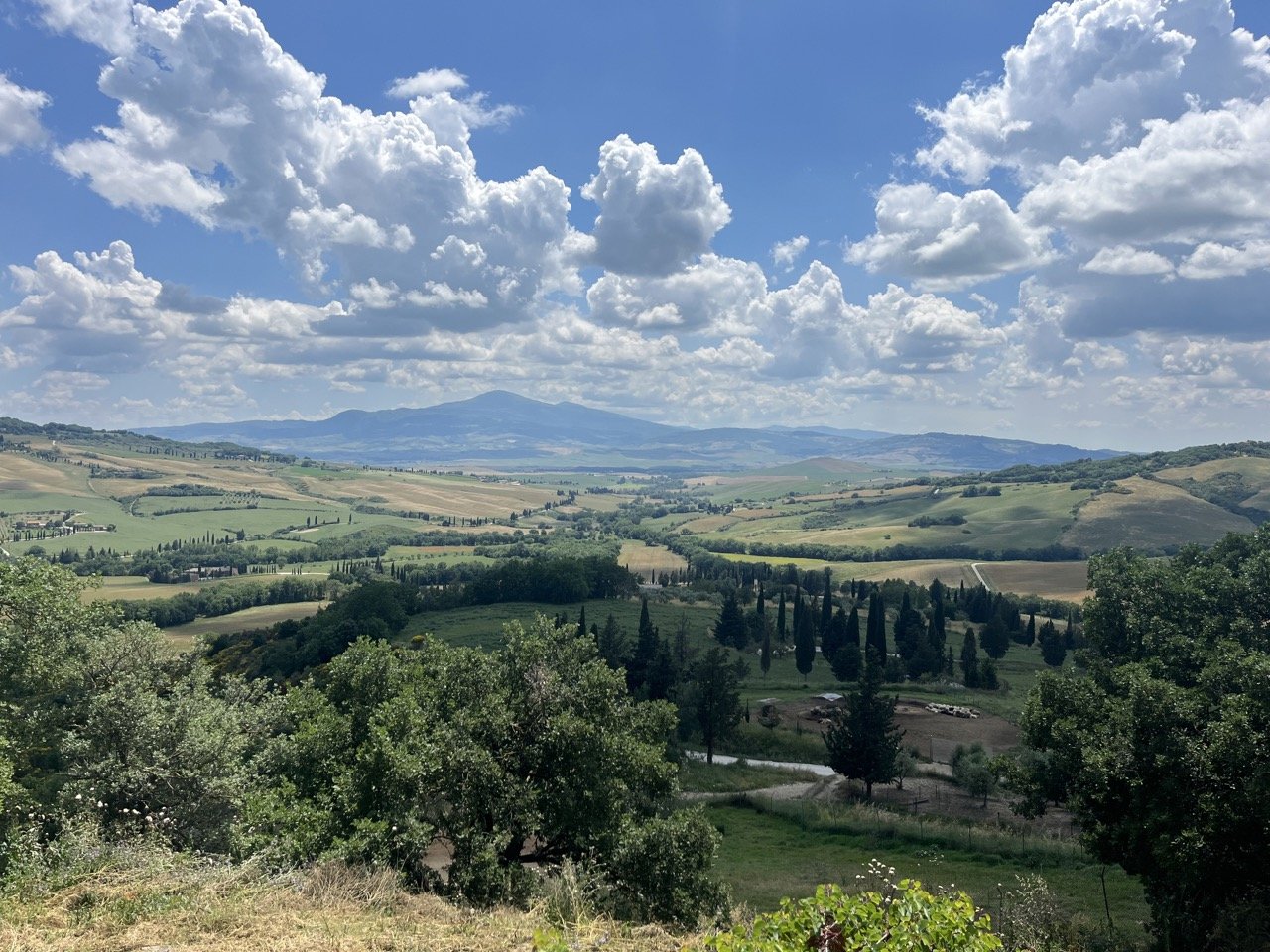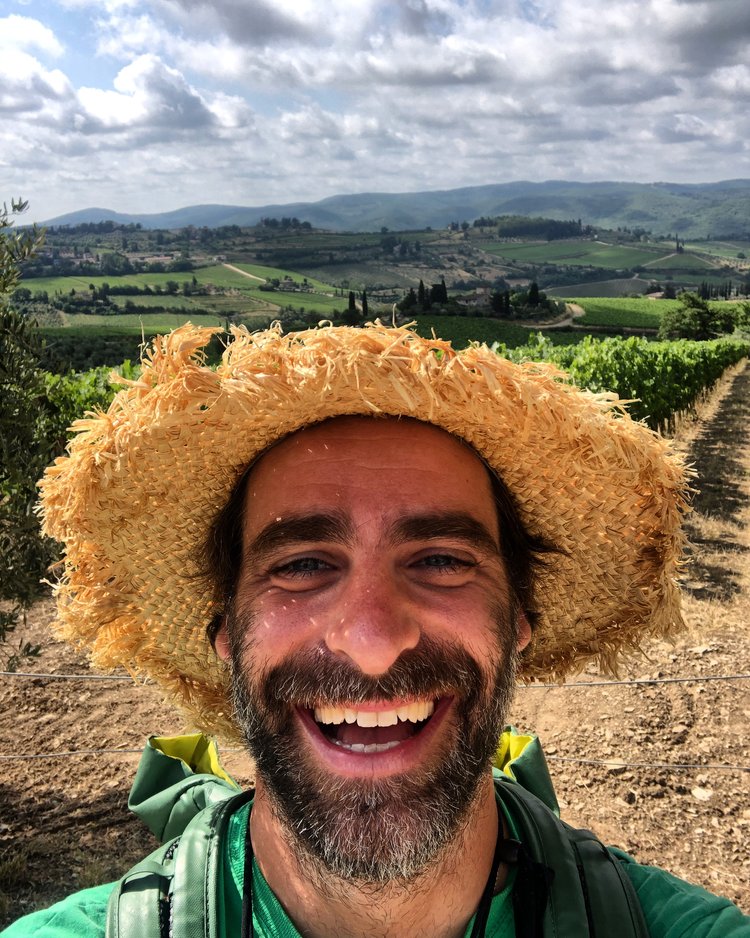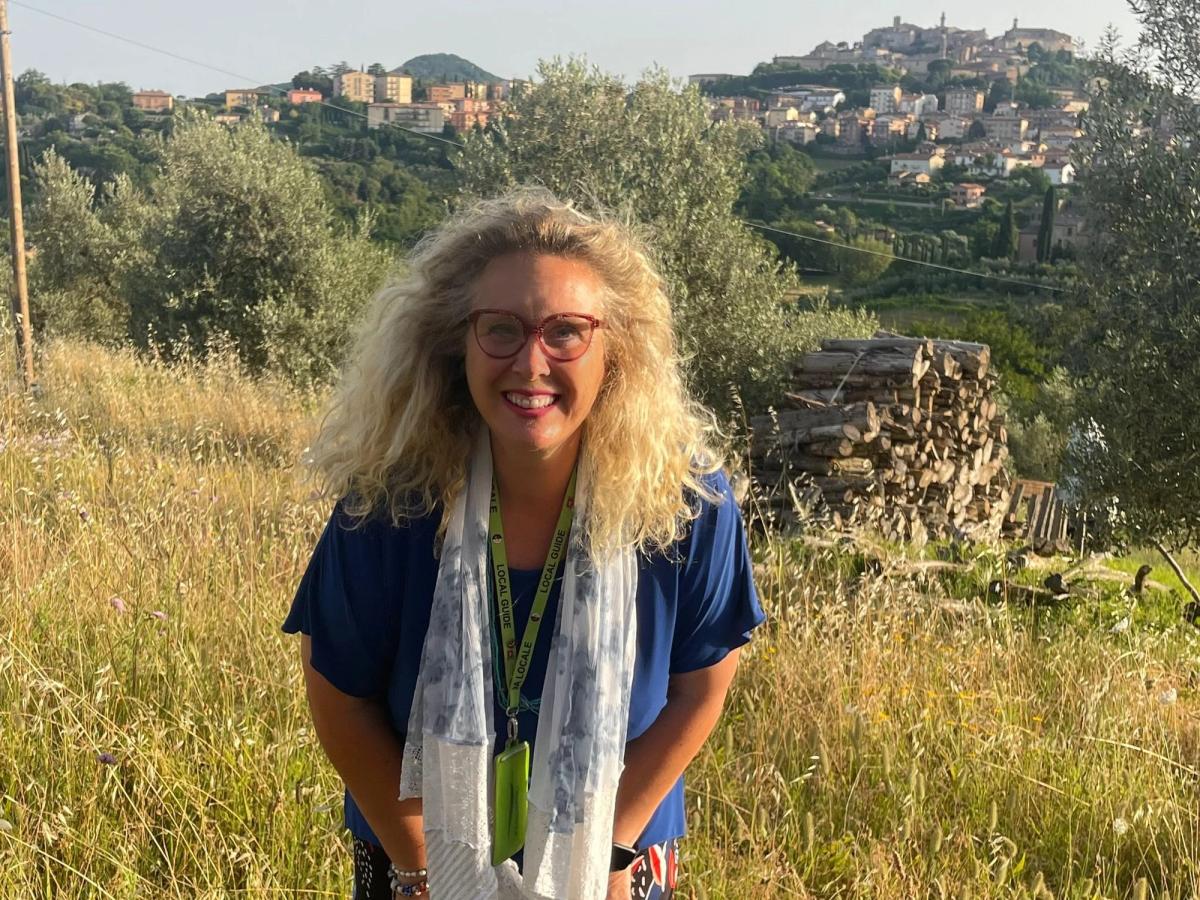Guide to Siena, Italy
Affiliate disclosure: some of the links in this article are affiliate links. If you book using one of them, we’ll earn a small commission. All of our info is free to read and free of ads, so we appreciate it!
Siena inspires a sense of awe as soon as you see the slender brick Torre del Mangia tower rising above the tile rooftops to airy heights of 320 feet, as impressive now as it has been for the past eight centuries.
The Torre and other monuments from the Middle Ages are what bring many visitors to Siena, now a city of about 50,000 people with a lovely medieval core made up of red bricks, elegant streets, and impressive piazzas.
After admiring the magnificent, marble-striped Duomo (the city’s cathedral) and walking across the sloping, scallop-shaped Piazza del Campo square, just about everyone goes away thinking they’ve spent time in one of the most beautiful cities in Italy. They’re not wrong.
These landmarks are holdovers from the prosperity and harmony that flourished when Siena was among the most important cities in medieval Europe, on major trade and pilgrimage routes, and a fierce rival of nearby Florence.
Then, in 1348, the plague killed as many as half the city’s residents and brought an end to these golden years. Architecture-wise, not much has changed since then, and that, of course, is much of the appeal.
Siena is much more than a holdover from the past though, and the animated street life, delicious food and wine, and friendly chatter in the bars and cafes seem all the more appealing in such timeless and extraordinary surroundings.
Table of Contents
Tuscany planning cheatsheet
 Plan your itinerary with expert advice
Plan your itinerary with expert advice
- Book an Italy travel consultation with a local expert
 My favorite hotels in Tuscany
My favorite hotels in Tuscany
- Hotel Calimala - Gorgeous boutique hotel in Florence's historic center. $250-450 USD
- Locanda de Ciomp - Excellent value guesthouse in Florence. $150-200 USD
- Palazzo Ravizza - Lovely midrange option in Siena. $120-175 USD
- Castello di Fonterutoli - Delightful castle & winery resort in the Chianti countryside. $200-300 USD
- Meublé il Riccio - Historic property in the heart of Montepulciano. $160 USD
- La Casa Di Adelina - Charming B&B in the Val d'Orcia village of Montichiello. $130 USD
 Guided tours and activities
Guided tours and activities
 How to get around
How to get around
- Car rentals with DiscoverCars
- Train tickets from Trenitalia and Italo
- Bus routes via Autolinee Toscane, Sitabus, and Flixbus
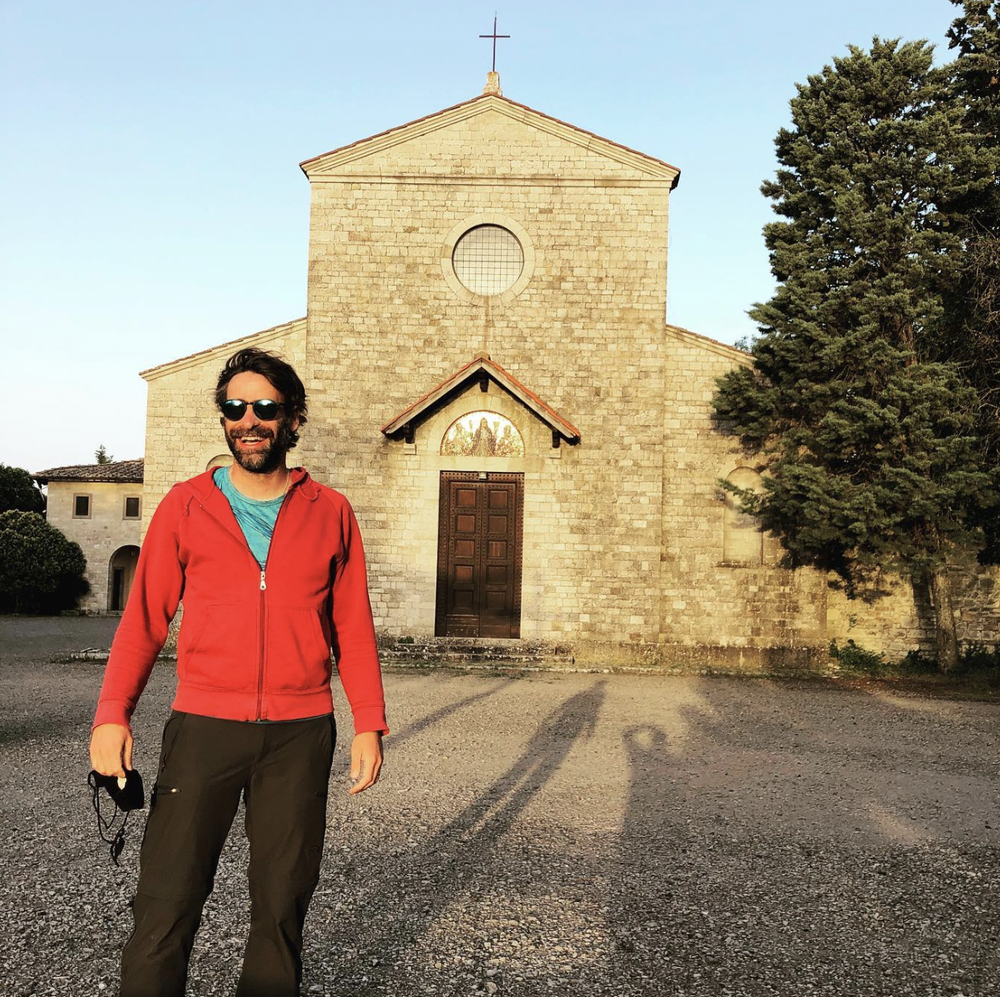

Where is Siena?
Siena is in the center of Tuscany, 75km (47 miles) south of Florence and 235km (146 miles) north of Rome. Besides having easy access to the Tuscan capital, Siena is at the edge of two of the most beautiful regions in Italy; Chianti to the north and the Val d’Orcia to the southwest, and both happen to produce some of the world’s finest wines.
How to get here
By train
Siena is not on Italy’s high-speed train network but is linked to Florence by frequent regional service. Direct trains run about every hour and the trip takes an hour and a half. Non-direct trains make a stop in Empoli, with the journey taking 1 hour and 45 minutes. Tickets cost 10.20 euros.
Getting to Siena via train from Rome is a long journey as you must first go to Florence, and then switch to a Regionale train heading to Siena.
By bus
Buses from Florence to Siena leave throughout the day and the ride takes around an hour. The route is run by the Marino, Flixbus, and Itabus companies. Tickets cost 4-8 euros.
If you’re headed to Siena from Rome, your best bet is to take a FlixBus from Rome’s Tiburtina train station. There are around 8 departures each day and the journey takes 2.5-3 hours. Tickets cost from 3-15 euros.
By car
By car, Siena is about an hour from Florence on the Ricordo Autostradale Firenze–Siena. Alternatively, you can also get between the two cities via the local SR 222 route (known as the Chiantigiana) which passes through the lovely Chianti wine country and only takes about half an hour longer on what is a much more scenic drive.
Most of Siena’s historic center is closed to cars, though parking lots ring the city and some are connected to the old center by escalators, making it easy to stash the car and have access to it for day trips.
Where to find a car rental
You have a few rental agencies in Siena, but in general you’re much better off getting a car in Florence or Pisa, where you have the best selection of rental cars (and typically best prices) in Tuscany.
To check prices and book, I recommend using DiscoverCars. It’s a car rental website that includes offerings from all the major international rental companies as well as lots of smaller local agencies, which often have much better pricing. You can often find great deals.
Why visit
The main reason to visit Siena is to see its medieval architecture, stunning Duomo, and iconic Piazza del Campo square. However, the city is also a perfect base from which to explore the nearby region of Chianti, a major wine-producing area that is also home to a handful of charming stone villages.
The little-visited Crete Senesi area, which has beautiful landscapes, is also nearby as is the wonderful Val d'Orcia region.
Siena is one of Tuscany (and Italy’s) prettiest cities. Its medieval red brick buildings and cobbled streets are incredibly atmospheric and charming, and it’s small enough that you can explore the entire city in just a day. It is also home to one of Italy’s most beautiful cathedrals and one of her most impressive squares.
It’s a place that requires no effort to be enjoyed and virtually no advance planning either. You can simply walk into the historic center and spend time wandering about, and you are sure to come upon the main sights and pass by countless beautiful buildings and squares.
Aside from the city itself, Siena is also just at the edge of the Chianti wine region, and rolling hills carpeted in fields of grapes extend all around the city. For a totally different landscape, the dry, clay-filled Crete Senesi badlands are only 20 minutes away, and even the Val d’Orcia is in easy reach for a day trip.
How long to spend
Siena is popular with day trippers from Florence, many of whom come on group tours that also include a lightning-fast visit to nearby San Gimignano or a winery in Chianti. If this is what works with your schedule, it's a fine way to visit, but by no means ideal.
To enjoy Siena in the way it deserves, you should budget a full day to visit and spend the night. A day lets you see the main sights without rushing through them, meander leisurely and do a little shopping, and enjoy an evening in town, when the city becomes its most atmospheric. The benefit of spending the night is that you'll get to take a morning walk the following day, before the crowds arrive.
However, if all you want to do is see the Piazza del Campo, climb Torre del Mangia, enter the stunning Cathedral, and wander the city’s main streets, you can reasonably visit in a half day. In that case, give yourself a bare minimum of one hour for the Cathedral (and more time is better), another hour for the Campo square and tower, and then an hour or two of aimless walking to enjoy the medieval atmosphere. I’d also recommend stopping for a good meal.
While visiting Siena as a day trip is entirely doable, spending a night or two lets you explore with more leisure, relax over wine and dinner in one of the city’s many excellent restaurants, and potentially visit the beautiful surrounding Chianti countryside and wineries.
Where to stay
Siena is small and compact, so as long as you stay within or around the city walls, you’ll never be far from anything. However, one very important consideration is whether or not you’ll have a car. If you will but don’t plan on using it during your stay, then you can just park at one of the paid lots outside the city walls (there is a safe lot near the soccer stadium) and pick it up when you leave.
However, if you’re staying for a few days and planning on coming and going with the car, you’ll probably want to stay at a hotel with parking, which means staying outside the city walls. The area around Porta Camolia (Camolia gate) has quite a few good hotels, both on-street parking and paid lots, and lots of local restaurants, cafes, and bars. It’s a 20-30 minute walk from the gate to the Duomo.
The hotels below are all either in or just outside the city walls. The listed rates are for a double with breakfast and include a range from low-season (winter) to high-season. May, September, and October are usually the most expensive times to stay.
Grand Hotel Continental - This 5-star hotel is located across from Piazza Salimbeni right on Siena’s premier pedestrian street and just minutes from Piazza del Campo and the Duomo. The 5-star rating is a bit optimistic in my opinion, but the rooms are lovely and the location, smack in the center of Siena, is simply unbeatable. From 350 to 700 euros.
Borgo San Felice - Borgo San Felice is a stunning 5-star property in the Chianti countryside about 20 minutes south of Siena. It resembels a small medieval village, has a Michelin-starred restaurants, and owns large vineyards whose final product you can taste at the delightful on-site tasting room. From 600 euros.
Campo Regio Relais – Stylish rooms in an old house look out to the magical cityscape and Duomo, and welcoming sitting rooms open to a sunny terrace. From 200 to 275 euros.
Il Battisero – Stylish rooms and suites in a former papal residence face the Baptistery and enjoy an in-house wine shop and tasting room. From 110 to 160 euros.
Palazzo Ravizza – A 17th-century Renaissance palazzo full of oil paintings, antiques, and beamed ceilings suggests an age of genteel travel, and a large garden enhances the atmosphere. From 100 to 175 euros.
Hotel Santa Caterina – A homey old inn just a few steps outside the city walls has cozy, wood-beamed guest rooms that overlook the countryside and a large garden. From 90 to 175 euros.
Casacenti — A converted family apartment now accommodates guests in four spacious rooms just behind the Duomo. From 70 to 110 euros.
Weather & when to visit
Late spring and early fall are the busiest seasons, but Siena, with its commerce and university, is lively year round. Many people visiting the Chianti wine region for the fall harvest base themselves in and around Siena, so expect harvest time to be especially busy.
In late fall (from the second half of October) the crowds start to fall off, temperatures get very pleasant, and the region begins to fall back into it’s normal rhythms, making for a very pleasant visit.
August (and summer in general) is hot and not a terribly popular time to visit, and unless you’re coming specifically to see the Palio, you’d well advised to avoid Siena at the time of these races, June 12 and August 16, when the city is jam-packed, restaurants are full, and hotel rates soar.
Throughout the winter many hotels and restaurants stay open, and it’s actually quite a pleasant time to visit. Temperatures remain in the 40s and 50s (5C to 15C), hotel rates are at their lowest, and attractions are never crowded.
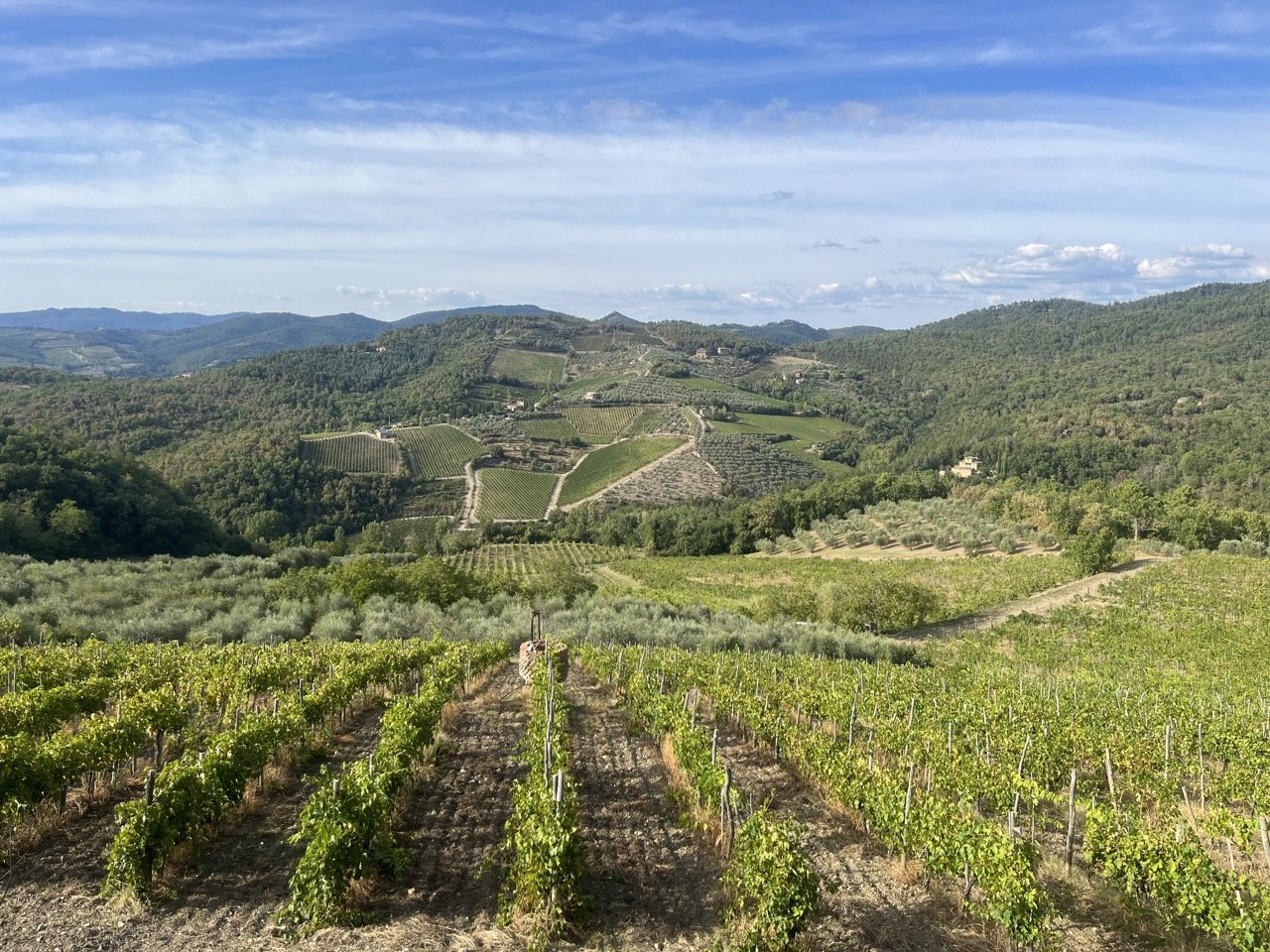
What to see and do
1. Explore the Piazza del Duomo
Siena’s soaring black-and-white striped cathedral was completed in the 13th century and is a showcase of Gothic architecture. Father and son team Nicola and Giovanni Pisano carved the elaborate façade with an army of prophets and angels, and the vast interior is awash with 56 inlaid marble and mosaic floor panels that depict the Slaughter of the Innocents and other scenes from the Old Testament.
Sculptures, stained glass, altarpieces and other treasures from the cathedral are in the adjacent Museo dell’Opera museum, located in the nave of what was meant to be an extension of the duomo until the plague halted construction in 1348. A walkway high atop the unfinished façade, the Facciatone, provides views across the city and countryside that rival those from the Torre del Mangia.
Santa Maria della Scala, also on Piazza del Duomo, was founded in 1090 as a hospital and over the centuries was an infirmary, orphanage, and hospice for pilgrims (the building operated as a hospital into the 1990s). These varied activities are recorded in detail in colorful frescoes in the Sala del Pellegrino (Pilgrims’ Hall).
2. Admire the Campo
This eye-pleasing expanse at the heart of the city has not changed since it was laid out eight centuries ago and still suggests the city’s medieval prominence. Although it is a piazza of sorts, it is not square or round, but rather in a somewhat shell-like shape, highly unusual anywhere in Italy.
The most imposing presence on the sloping, scallop-shell-shaped “square” is the Palazzo Pubblico, the seat of the city’s medieval governors, the Council of Nine. Above it soars a slender brick tower, the Torre del Mangia.
Take some time to admire the harmonious effect of the Campo then step into the Palazzo Pubblico to see Ambrogio Lorenzetti’s 1338 “Allegory of Good and Bad Government.” These frescoes capture Siena and the countryside in the 14th century, and are advertisements for the advantages of good governance: prosperity-filled city scenes and fertile fields on the “good” side and crumbling buildings and barren fields on the “bad” side. (The frescoes might be under wraps for restoration when you visit, so check at the ticket office.)
In the Torre del Mangia, 503 steps ascend to a viewing platform that looks across all of Tuscany.
3. Take a walk through the historic center
It’s a pleasure to walk around Siena, admiring the Gothic architecture and soaking in the street life. As you explore the town you’ll be wandering in and out of the city’s 17 contrade, historic districts. Each has its own symbol, an animal of mythological creature, and these are emblazoned on the flags that you’ll see all over town.
On street corners you’ll also notice little plaques illustrated with a contrada’s symbol - dragon, owl, she-wolf, caterpillar, and so on - to mark the limits of each district.
A walk can begin at Porta Camollia, one of the city’s seven medieval gates and the one that pilgrims entered when they stopped in Siena on the long trek from Canterbury, England, to and from Rome along the Via Francigena.
Like them, you can follow the Via Camollia past such landmarks as the church of San Pietro alla Magione, once a pilgrim’s hospice, and the imposing Palazzo Salimbeni and Palazzo Tolomei, former homes of powerful banking clans that fittingly now house banks.
The lively, shop-lined Via Banchi di Sopra skirts the Campo, then branches off toward Piazza del Duomo, where pilgrims received a blessing in the cathedral and settled into an enormous hostel, Santa Maria della Scala.
Though Siena is hilly, you can stay on fairly level ground while exploring, but if you’re willing to do a little climbing, follow steep Via Fontebranda from the Campo down to the same-named fountain at the foot of the hill. This picturesque pool is one of several springs that once supplied the city’s drinking water.
A climb up steep streets and stairs from here brings you to the Basilica di San Domenico, a massive church that overlooks the city.
4. Get into Palio-mania
Siena’s big event is the Palio, a bareback horse race around the Campo that takes place on July 12 and August 16.
Jockeys from 10 of Siena’s 17 contrade (districts) are chosen by lottery to compete and the race is preceded by a parade and flag-waving ceremonies, and followed by communal feasts around town.
Though the three laps around the Campo take only two minutes, Sienese talk about the Palio all year long, any you’ll see photos and other memorabilia of the event at any time of the year you visit.
Whether or not you want to attend depends on your tolerance for crowds, inconvenience, and expense: watching the race entails standing in the center of the Campo with thousands of other spectators for hours or paying hundreds of euros to sit in makeshift bleachers or even more still, 1,000 euros or more to watch from one of the windows overlooking the square.
5. Stop by Piazza Salimbeni
Directly off of Via Banchi di Sopra, one of Siena’s main streets, is the lovely square of Piazza Salimbeni. Aside from being beautiful, it is also home to the offices of Banca Monte dei Paschi di Siena, one of the oldest banks in the world. The square is most pleasant early in the morning when no one else is around and you can appreciate the intricate architectural details of the surrounding buildings.
6. Become a pilgrim - walk some of the Via Francigena
The Via Francigena, a medieval pilgrimage route that crossed Europe between Canterbury, England, and Rome, skirts Siena. The route is now a popular walking journey, and enthusiasts can do everything from weeks of it to just little stretches.
For an easy day hike on the route’s dirt and gravel tracks around Siena, follow a 25-km (15-mile) stretch south toward the twon of Ponte d’Arbia or a 20km (12-mile) section northwest toward the town of Monteriggioni. The tourist office in Siena can provide maps and information on these and other Francigena routes.
7. Pay Homage to Saint Catherine
The Sienese are almost as passionate about Catherine di Benincasa (1347–1380) as they are about the Palio. Their patron saint, who is also, with St. Francis, co-patron of Italy, wed herself to Christ when she was still a teenager.
Catherine took care of the poor and inform, wrote treatises, acted as an envoy for the church, and practiced exorcisms before fasting herself to death at age 33. Her head and thumb are preserved in the basilica of San Domenico, an imposing although rather spartan church, and her family home is now a shrine.
8. Enjoy some local wine
Siena’s neighbors produce some of the best wines in the world: Chianti Classicos from Chianti, Brunello di Montalcino and Vino Nobile di Montepulciano from the Val d’Orcia, and Vernaccia di San Gimignano wines from the same-named town.
You can experience them all without leaving Siena, at Vineria Tirabusciò, a wine bar, and Cantina del Brunello di Montalcino, a wine shop. Il Battisero hotel hosts wine tastings in their ancient cellars.
9. Take a day trip
Siena is the perfect location from which to day trip all around Tuscany and you’ll be spoiled for choice when it comes to nearby places to visit. Here are some options:
Chianti
The countryside that stretches 60km (37 miles) between Siena and Florence - Chianti - not only produces some of the world’s finest wines but is also one of the most beautiful places in Tuscany, a landscape of vineyards, olive groves, and pretty stone villages.
On and off the scenery-filled road north from Siena through the region, the SR222, also called the Chiantigiana, are dozens of wineries, many in historic castles, where you can taste the Chiantis and Super Tuscans that put the region on the wine map. The enticing countryside lends itself to hiking, biking, and just taking in the endless views.
If you're interested in wine and want to enjoy a day of wine tasting and winery visits, reach out to local guide and sommelier Stefano Mazzantini.
Crete Senesi
Immediately to the south of Siena is a landscape of gentle clay hills, literally the clays of Siena, or Crete Senesi. The stark hillsides are eerily lonely and empty, with isolated farms appearing now and then.
An unexpected outpost of civilization in these so-called “badlands” is the charming and pretty town of Buonconvento, whose name derives from Latin for “happy place.” Another welcoming spot is the Abbey of Monte Oliveto Maggiore, which appears like a red-brick mirage among the gray hills.
Inside is yet another Tuscan art treasure: A 36-scene fresco cycle that illustrates the life of St. Benedict in colorful detail.
Val d’Orcia
Another beautiful landscape of rolling hills stretches from Siena to Monte Amiata mountain in southern Tuscany, the Val d’Orcia is carpeted with vineyards that surround such towns as Pienza, a little Renaissance gem, and Montalcino, clustered around a medieval square and famous for its wine, Brunello di Montalcino.
While traveling between these and other pretty towns down cypress-shaded lanes you’ll probably be tempted to take a photo or two, and you’re in good company; painters have been capturing these iconic landscapes for centuries. You’ll probably also be tempted to make a stop at one of the region’s many wineries.
Montepulciano, at the eastern edge of the region, is a very high hill town with a steep main street lined with enotecas serving the town’s Nobile di Montepulciano and Rosso di Montepulciano wines. From there it’s only an hour back to Siena.
For a day of exploring the rolling hills of the Val d’Orcia, Montepulciano-based guide Serena Baglioni is always my recommendation.
Monteriggioni
This perfectly preserved tiny village on a hillside 14km (8 1/2 miles) northwest of Siena, seems more like a Disney creation than a real place, but the thick walls have been sheltering residents for centuries. Guardsmen in the 14 towers once kept a close watch on the surrounding countryside for Florentine invaders, and the viewpoints still provide a good outlook over the vineyards.
You probably won’t spend too much time here - a walk from one end of town to the other takes about ten minutes - but Monteriggioni is a good stop on the way to San Gimignano.
San Gimignano and Voltera
San Gimignano, a little over half an hour west of Siena, is a little too popular for its own good these days, but it’s easy to see the appeal: A dozen towers rise above the atmospheric medieval town, giving rise to nicknames like “Manhattan of the Middle Ages.”
Another attraction is the town’s dry white Vernaccia di San Gimignano, Tuscany’s only white wine with a DOCG designation.
Volterra, half an hour west, is one of the highest of the Tuscan hill towns, set at the edge of a bluff 540m (1,772 ft.) above the valley below. This somber, Gothic town has two claims to fame: It’s the hometown of the Volturi in the Twilight Saga and, of more historic and lasting importance, was one of the largest cities of the Etruscans.
This cultivated civilization that flourished almost 3,000 year ago left behind a treasure trove of artifacts that include remarkable funerary urns—often elaborately carved with touching depictions of the interred—that are showcased in the Museo Etrusco Guarnacci.
Arezzo and Cortona
An easy trip of less than an hour brings you to Arezzo, a lively, workaday small city built around a medieval core where cobbled streets lead uphill to a beautiful sloping square, Piazza Grande.
One of the world’s greatest fresco cycles (alone worth the trip to see) is Piero della Francesco’s “Legend of the True Cross” in the church of San Francesco. The 10 amazingly rich scenes of 15th-century storytelling are full of knights and buxom ladies and human drama.
Cortona is a somber, untouched medieval town tucked onto a hillside half an hour south of Arezzo. This is a place to walk: first through two stage set squares, Piazza Signorelli and Piazza della Repubblica, and into the public gardens for views all the way south to Lago Trasimeno in Umbria.
Then it’s up hill along stepped streets to the to the Basilica di Santa Margherita, where the body of the namesake city patron, a little the worse for wear, is on view, then even higher to the Fortezza di Girifalco, a vast Medici stronghold.
The drive back to Siena from Cortona takes an hour.
Val d’Orcia
Crete Senesi


Restaurants and dining
You’ll eat well in Siena, but not lightly. A meal might start with crostini, toasted bread topped with chicken liver or a tagliere (selection) of local hams and cheeses, move on to pici or pappardelle pasta with a sauce of wild boar or hare, then a Florentine steak.
The soup of choice here is ribollita, peasant fare that combines leftover vegetables and day-old bread.
Favored sweets are panforte, a sweet, dense cake from a medieval recipe of candied fruits, nuts, and honey; ricciarelli, soft almond cookies; and cantucci, almond biscuits that are twice baked and dipped in vin santo. You’ll find these sweet favorites at such august pastry shops as Drogheria Manganelli, Pasticceria Nannini, and ll Magnifico.
Quick eats
In Siena, this might mean a platter of Tuscan hams or a porchetta sandwich, both on offer at Prosciutteria.
The city’s most venerable sandwich shop is Gino Cacino d’Angelo, behind flowering shrubbery on Piazza Mercato, where local hams and cheeses come together in wonderful combinations accompanied by local wines.
Neighborhood Trattorias
Everyone has their own favorite local eatery and two standouts are L’Osteria dei Rossi and La Chiacchera. At both you can count on rich pastas and stews, beans and pasta concoctions, and other hearty stand-bys, and dinner for two should come in at under 60 euros.
Siena Classics
Antica Osteria da Divo, near the baptistery, occupies a series of brick-vaulted and rock-walled rooms that include some Etruscan tombs, all the more atmospheric when candlelit at night and the perfect setting for sella di cinghiale (saddle of wild boar braised in Chianti) and other well-presented dishes. Dinner for two is about 100 euros.
La Sosta di Violante, a neighborhood favorite near the Campo, does excellent pastas and steaks, along with some innovations like a cauliflower (cavolfiore) soufflé. Dinner for two is about 80 euros.
Pastas, steaks, and other Tuscan staples are elevated by several notches at Taverna San Giuseppe, where a long, brick vaulted room from the 12th century that provides an atmosphere as warm as the service. Dinner for two is about 80 euros.
How to spend a day in Siena
Morning
Any tour of Siena begins in the Campo, the large, scallop-shaped piazza at the city’s heart. You’ll approach the Campo from the streets that encircle it, Banchi di Sotto and Via di Citta, and as you walk along these streets let your imagination wander back to the Middle Ages, when Siena was one of the most important cities in Europe.
These streets would have been full of tradespeople and pilgrims, who stopped in Siena as they walked to and from Rome on the Via Francigena route. This bit of time travel sets the stage for seeing the Campo, built to impress with its harmony and grandeur, and the looming presence of the soaring Torre di Mangia.
You’ll be coming back here later, but for now, head up the Via di Citta toward another great landmark of the medieval city, the soaring black-and-white striped Duomo, completed in the 13th century and a showcase of Gothic architecture.
Admire the elaborately sculpted façade, then step into the vast interior. The cathedral would have been even larger had the Black Death not put an end to expansion plans. Part of the unfinished wing is now the Museo dell’Opera, filled with cathedral treasures and topped with a the Facciatone, a walkway on top of the façade that overlooks the city and countryside.
Another presence of the Piazza del Duomo is Santa Maria della Scala, a medieval infirmary, orphanage, and hospice for pilgrims. These activities are recorded in detail in colorful frescoes in the Sala del Pellegrino (Pilgrims’ Hall).
Afternoon
Now it’s time for lunch, either at a casual place like Gino Cacino d’Angelo, a panino shop behind flowering shrubbery on Piazza Mercato, or one of the many trattorias that cater to neighborhood locals.
Linger over lunch, then head back to the Campo to step inside the Palazzo Pubblico to see Ambrogio Lorenzetti’s 1338 “Allegory of Good and Bad Government.” These remarkable frescoes may be under wraps for restoration, but some other notable works fill the halls.
Whether or not you feel the need to climb the 503 steps of the Torre del Mangia is up to you, but you’ve already enjoyed a better view from the Facciatone and another outlook awaits.
A short walk across town, with a few ups and towns, brings you to the Basilica di San Domenico. Inside is the city’s most revered possessions, the severed head and thumb of patron Saint Catherine, and out front are pleasing views across the city and countryside.
Evening
Now it’s time to partake in a popular evening activity, enjoying a cocktail or a glass of wine at an outdoor café overlooking the Campo. After, head for a typical Tuscan dinner, which means pici or pappardelle pasta with a rich sauce, often followed by a grilled Bistecca alla Fiorentina.


More Tuscany travel info
For more advice on planning your trip to Florence, Tuscany, and Italy, have a look at some of our other guides and itineraries!
Florence
Tuscany




